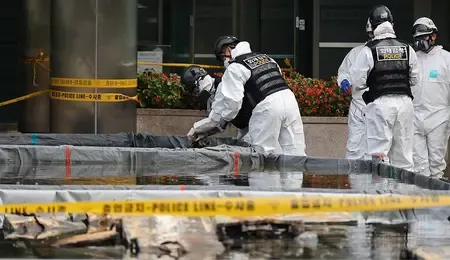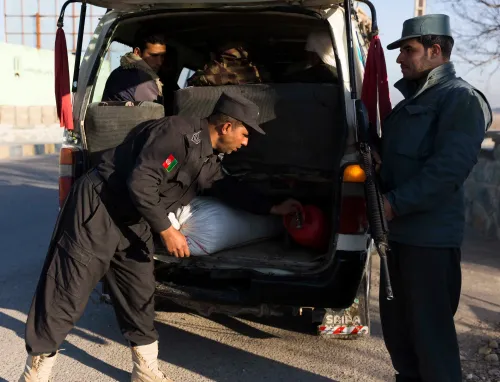Have Over 36% of South Korea's Online Government Services Been Restored After the Data Center Fire?

Synopsis
Key Takeaways
- 36.7% of online government services have been restored.
- The fire was caused by a lithium-ion battery explosion.
- 30 out of 40 Grade 1 services are back online.
- Government response has faced criticism for transparency issues.
- President Lee's visit aimed to boost public official morale.
Seoul, Oct 12 (NationPress) Officials reported that over 36 percent of the online government services in South Korea that were disrupted by a fire at a state data center last month have been successfully restored.
As of 9 p.m., a total of 260 out of 709 services affected by the incident at the National Information Resources Service (NIRS) in Daejeon have been brought back online, indicating a restoration rate of 36.7 percent, according to Yonhap News Agency.
The Central Disaster and Safety Countermeasures Headquarters announced that services recently restored include the Cultural Ministry's administrative support system for Korean culture centers and various websites linked to the Public Procurement Service.
Currently, out of 40 essential services classified as “Grade 1,” 30 have been reinstated, reflecting a recovery rate of 75 percent. Meanwhile, the restoration rate for “Grade 2” services stands at 51.5 percent.
The fire at NIRS was ignited by an exploding lithium-ion battery in a server room on September 26 and was fully extinguished the next day. The police are still probing the precise cause of the fire.
On October 10, President Lee Jae Myung visited the state data center that experienced significant damage from the fire to assess recovery efforts, as confirmed by the presidential office.
Lee's visit to the NIRS in Daejeon was part of the government's intensified efforts to restore online services, particularly since the fire severely impacted major data storage systems.
Though Lee had planned to take the day off following the extended Chuseok holiday, which concluded on Thursday, he opted to inspect the data center.
Analysts suggest that Lee's decision to visit the facility on his day off may be a strategy to quell criticism stemming from his recent appearance on a TV cooking show during a nationwide outage of government services caused by the fire.
The ruling Democratic Party defended Lee's TV appearance as beneficial for promoting K-foods, whereas the main opposition People Power Party criticized it as inappropriate.
Moreover, the government has faced backlash regarding its handling of the incident, particularly after it revised the number of malfunctioning systems from 647 to 709 just two weeks post-fire.
A presidential official remarked, “The visit was organized to motivate public officials who have been working diligently even during the holiday. It was planned in advance and is not linked to Lee's TV appearance,” according to Yonhap News Agency.








